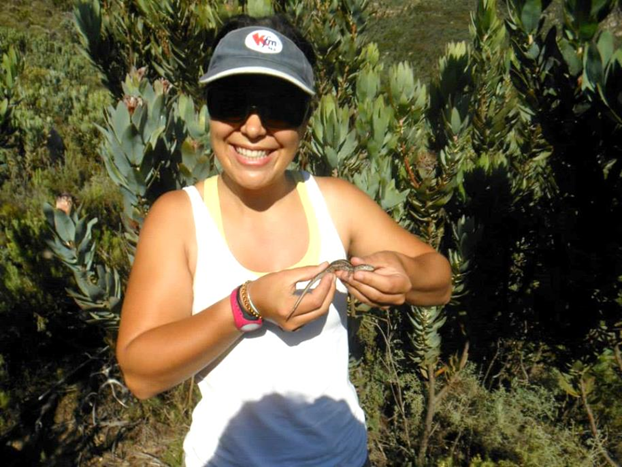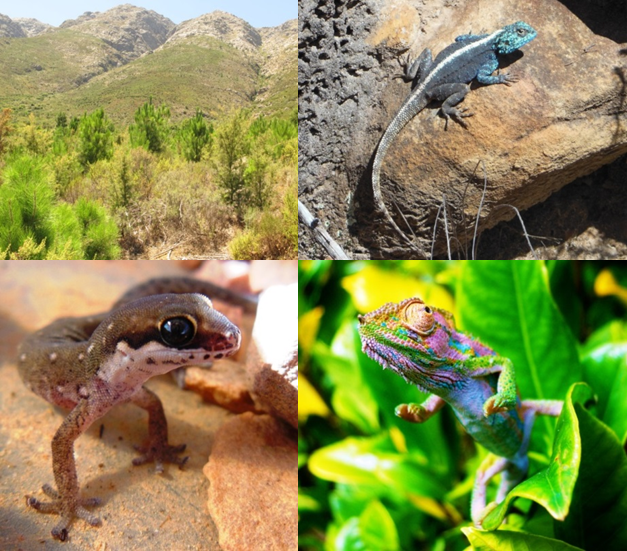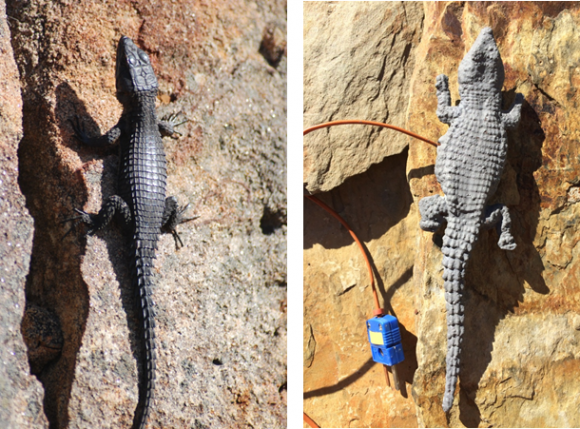Invasions by alien pine trees (Pinus spp.) can have a negative impact on native lizard species by changing their native habitat, according to a recent C·I·B study published in Oecologia.
The research by former C·I·B student, Elsje Schreuder and C·I·B Core Team Member, Susana Clusella-Trullas, found that pine plantations and native fynbos vegetation invaded by dense stands of pine trees had fewer lizard species and less individuals when compared to fynbos habitats.

Lizards rely on external heat sources, for example sunlight or warm rock surfaces, to keep their body temperature at levels suitable for functions such as mating and hunting prey. This makes them particularly sensitive to changes in their surrounding habitat. For example, a reduction in the availability of “warm” and “cool” microsites or changes in the configuration of these thermal opportunities can impair the maintenance of preferred body temperatures. These changes can readily translate into periods of body temperatures that fall outside an optimal range, imposing restrictions on activities such as mating, reproducing and feeding. This study aimed to test the effects of pine invasions on native fynbos thermal landscapes and how these effects can alter lizard communities.
The study was conducted in several areas with different levels of pine invasions. Habitat types included pristine fynbos, semi-invaded fynbos with few, small pine saplings, heavily invaded fynbos with many, large pine tree saplings, and pine forests. A detailed mapping of thermal opportunities was undertaken at each site by deploying numerous lizard copper replicas and by incorporating the heterogeneity of sun and shade patches in each habitat type. Arthropods were also collected to see whether invasive alien pine trees indirectly affect lizards by altering food resources.
The authors found that the number of different lizard species as well as the abundance of lizards (number of individuals) was lower in pine forests than in fynbos areas. Species diversity was also reduced in fynbos that was heavily invaded by pine trees compared to native fynbos. Arthropod composition varied greatly between habitat types, suggesting that lizards that specialize most on particular prey are likely to be more vulnerable to pine invasions. Overall, this study demonstrated that pine tree invasions have an impact on lizard communities both through temperature changes and through availability of resources. These effects were shown to change drastically among sites and seasons and therefore, long-term examinations are needed to obtain a complete picture of impacts of alien plants on reptile communities.
“The fynbos areas provide nooks and crannies for lizards to get away from the sun, but also enough sun-exposed surfaces, whereas the invaded areas are dominated by taller and denser canopies of pine trees that prevent sunlight from coming through,” said Elsje Schreuder.
“Pine trees pose a threat to lizard communities through their effects on thermal opportunities for behavioural regulation and prey abundance. These processes can likely have knock-on effects on whole ecosystems, increasing the list of negative effects of pine afforestation in the fynbos biome,” said Schreuder. “It is important that management strategies include the thermal mapping of temperatures within native and invaded areas and the thermal physiology of the species found there, to make informed decisions of the impacts of alien plants on reptiles.”
Read the paper in Oecologia
For more information, contact Susana Clusella-Trullas at sct333@sun.ac.za




